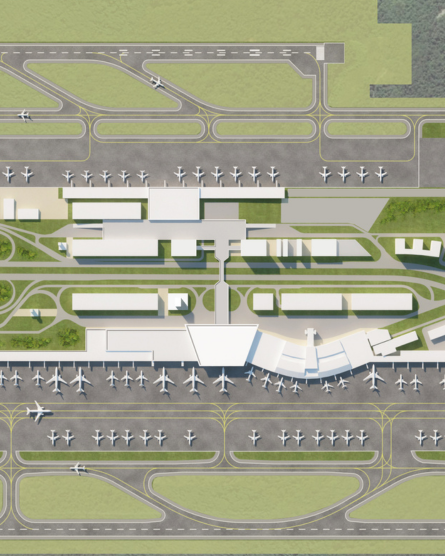At „Passenger Terminal Expo“ in Madrid in April 2025 I attended an insightful talk on the use of AI at Airports. An Amazon and a Microsoft executives shared their view on how airports approach this topic. The room was packed, AI is on everyone’s mind in the aviation industry.
Yet, I couldn’t shake a sense of déjà vu: The same promises we now hear about AI were already being made a decade ago under the banner of „digital transformation.“
- enhanced customer experience
- increased efficiency across stakeholders
- solutions to staffing shortages
Airports today’s Business Model undermines AI-Driven Efficiency Gains
The two IT specialists highlighted one important point: Realizing AI’s full potential requires rethinking the underlying business model. This is second nature to tech professionals, but in the airport world, such thinking is rare.
From a tech company’s perspective, an airport business model seems like a hotel where nearly every service -from reception to room service- is outsourced to independent operators with differing goals. This set up creates too many interfaces to be coordinated and parallel silos of information and data. Obviously not a promising starting point for any kind of AI process.
Real change is possible
But wherever in recent years business model change happened, a remarkable achievement shift has taken place! Two examples:
At several German airports passenger security checkpoints -previously run and funded by the federal police- have been taken over by the airports themselves. With great results! The modernization of infrastructure could be significantly accelerated and the quality of service for passengers greatly improved.
Starting in 2027, all goods for Vienna Airport’s terminals will be managed centrally through a new logistics center, serving over 100 shops and restaurants. Deliveries will be registered, security-checked, consolidated, and efficiently distributed. This will reduce individual deliveries and improve predictability for all retail / F+B operators at the airport. The solution is also saving high value space in the terminal, as logistic and storage will be handled in a separate building.
The power of radical questions
To optimize processes and truly harness the potential of AI, airports must dare to think much more radically when planning for the future. Many airport people are very good in optimizing. But any deeper AI based strategy requires changing things completely, not only optimising them. A good starting point are radical questions. Here are three examples:
- Does it really make sense for each airline to operate its own check-in areas or lounges, or could this not be done more efficiently by the airport itself?
- Is there a way to reduce the large seating areas at each individual gate and thus optimize building space? (Considering that train stations handle as many passengers as airports, but manage with far fewer seats)
- Baggage- and ground-handling has enormous automation potential. However, ground-handling companies will not be able to finance and implement this on their own. If several airports would bundle their efforts, they could invest in a common solution
𝗪𝗵𝗮𝘁 𝗼𝘁𝗵𝗲𝗿 𝘂𝘀𝗲 𝗰𝗮𝘀𝗲𝘀 𝗱𝗼 𝘆𝗼𝘂 𝘀𝗲𝗲… with potential to rethink the airport business model?


